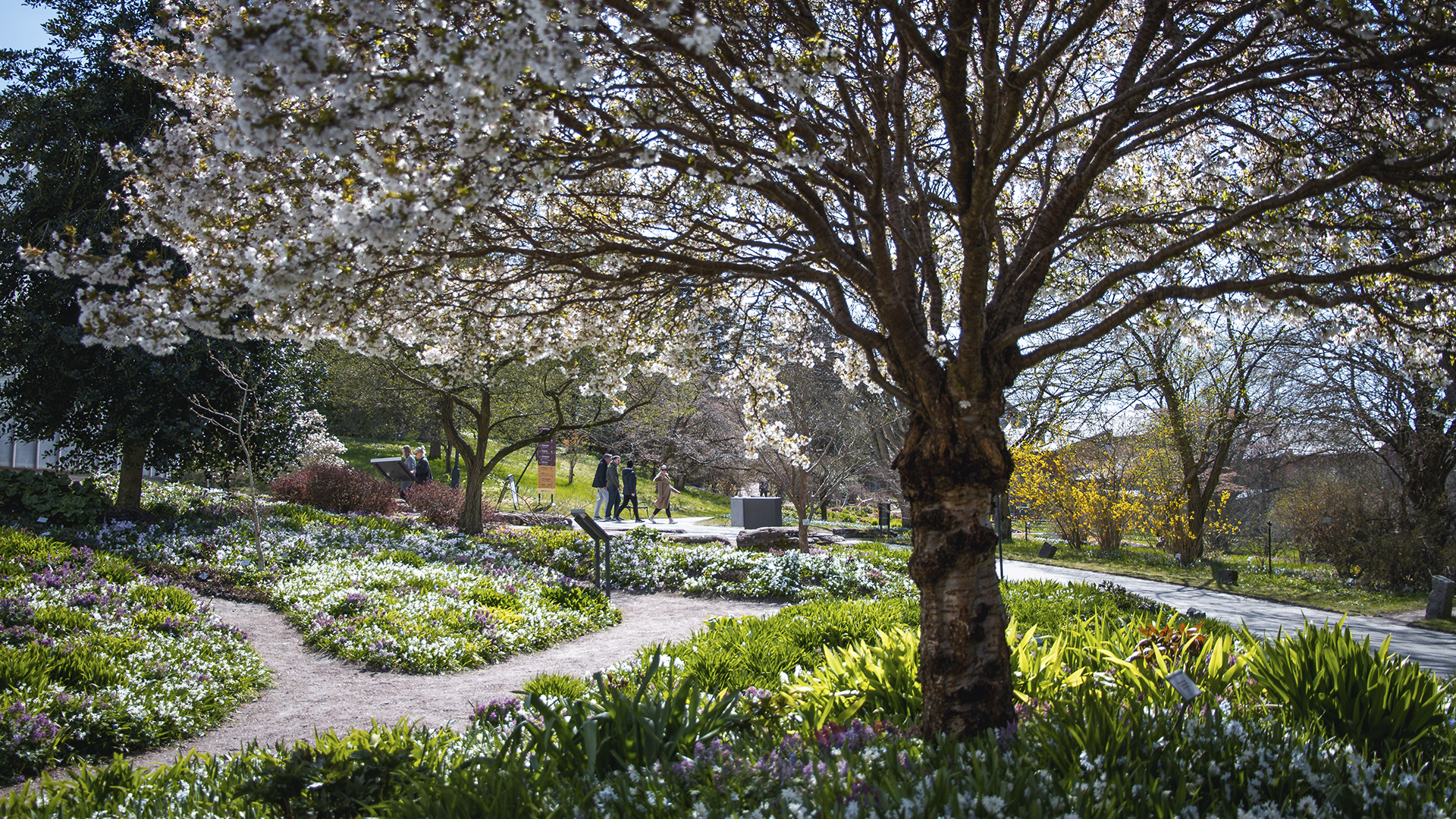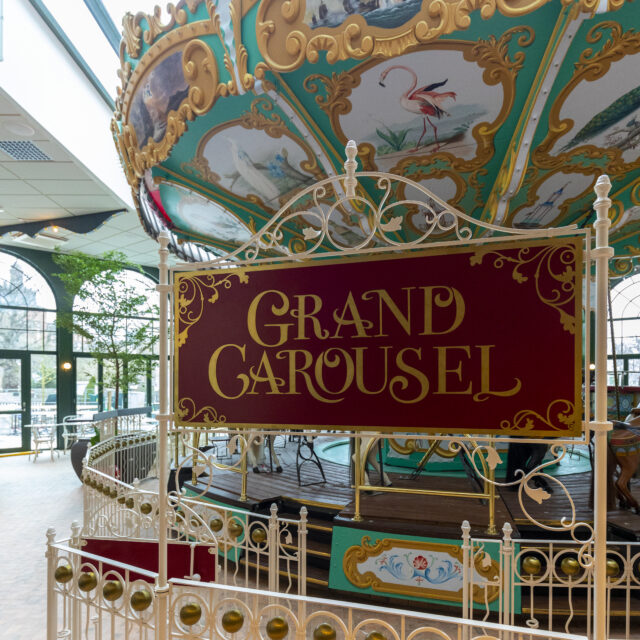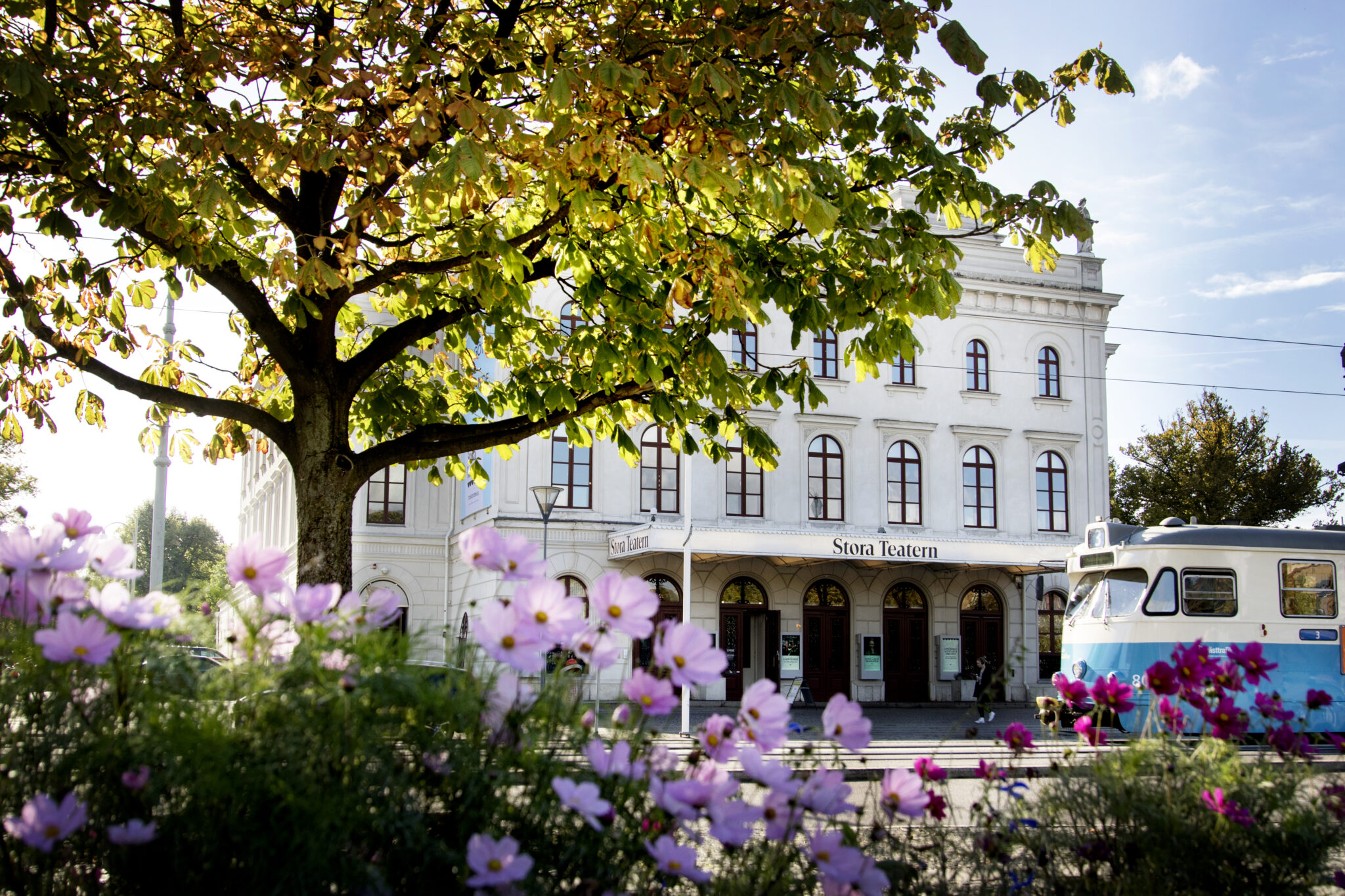The 100-year-olds still going strong
One hundred years ago Gustav V opened the biggest ever exhibition to be held in the Nordic countries. Institutions inaugurated for the 1923 Jubilee are still going strong – and are being equipped for the future.

Consumed by color: Museum of Art and gallery
At Götaplatsen, Gothenburg Museum of Art and Konsthall, with the neighbouring Concert Hall, make up a cultural hub and form the focus for Gothenburg’s famous Kungsportsavenyn (a street also celebrating its 100th birthday). Even if the museum houses both Swedish and international art, the focus is now on Nordic art at the turn of the 19th century. In the art world, there are few things connected as closely with Gothenburg as Gothenburg colourism, or the Gothenburg group. The extensive exhibition of their “colour-mad” art marks the museum’s 100-year Jubilee: Wonderful colour. Gothenburg colourism in a new light. The exhibition runs until 7 April, 2024.
The biggest oasis in the North: The Botanical Garden
What a great idea 100 years ago, to create the Botanical Garden in Gothenburg. The donation was made by businessman Charles Felix Lindberg and with its 175 hectares, the garden is still the largest in the Nordic countries. If you haven’t yet visited, it’s time to find out what attracts 630,000 visitors every year from around the world. Maybe it’s the Rockery Garden, or the Japanese Garden where cherry trees bloom in the spring. It’s a great picnic spot, but the Botaniska Paviljongen café is also a good place to eat.The 100-year Jubilee will be celebrated over the whole year, with a big party on 8 July. During the summer, visitors will be able to see examples of artwork from Gothenburg’s artist-run art centre Konstepidemin. And if you’re lucky you may run across a celebrity in botanical circles, Professor of Systematics and Biodiversity, Alexandre Antonelli. He was previously head of Gothenburg’s Botanical Garden and is now Director of Science at that garden of gardens – Kew Gardens in west London, whose roots go back to 1759.

Everything… and more: Grand Curiosa & Liseberg
Mr and Mrs Daler explored the world, with Gothenburg as their base. While Mr Daler was a businessman operating on a large scale, his adventurous wife Agnes saw beauty in many things and collected the most wild and wonderful curios. The newly opened Grand Curiosa Hotel at Liseberg is a magical creation which makes the most sceptical of us feel like children again. That’s what Liseberg is good at – blurring the line between fantasy and reality. After parents have treated their children to ice creams at Café Agnes they can relax with coffee and cake, or have a mocktail while the children ride on the pony carousel from 1923. They may even feel like children themselves and test the slide behind the reception desk. Or stay put and investigate the curios of the Dalers placed carefully around the hotel. Liseberg’s newest attraction is Luna, a boomerang roller coaster, which at 33½ metres high is the biggest and fastest of its type in the world – and makes you feel as if you’re on a journey to the moon. But as evening falls you may want to pop into Compagniet and sink into a leather sofa in the bar with a cocktail and snacks, while your pulse returns to normal. This is adult time. On sunny days you’ll be tempted by the roof terrace and the Mei Rose Bar & Bistro with its Hongkong-inspired menu, where you can enjoy the view of the amusement park and Gothenburg’s skyline. The hotel’s 457 rooms all have at least five beds and children have their own cosy corner. For those who can’t get enough of Liseberg, there are rooms less than five metres away from the Valkyria ride. In the morning there’s breakfast at Saluhallen, offering dishes from all over the world. Although Liseberg attracts 3 million visitors every year, it looks like the new Hotel Grand Curiosa has the potential to tempt new visitors to Gothenburg. Soon water-lovers will have their dreams fulfilled at Oceana, which will form part of the hotel concept. The water park, also inspired by Gothenburg’s history , opens in spring 2024 and it is estimated that it will attract an additional 500,000 visitors per year. Inside it will have almost 6,000 square metres of water and outside a further 4,000. It offers everything from quiet lagoons to wild, watery rides.
Angry smile: The Aquarium at Gothenburg Maritime Museum
Residents of Gothenburg are famous for giving funny names to landmarks and local celebrities. Smile the Alligator is no exception. He once lived at the Aquarium, which is celebrating its 100th birthday this year. Today it’s mostly living sea creatures which attract visitors to the place. The story of Smile started in 1923 when several young alligators were ordered from Florida to grace the Jubilee Exhibition in Gothenburg. After a while in “Children’s Corner,” Smile was the only survivor. Smile was supposed to have been very short-tempered and was both lonely and bullied. When The Maritime Museum took over the Aquarium, Smile was included in the deal.If you’re hungry after your museum visit,Luckans fisk och skaldjur are nearby at Mariaplan. Here you can buy dishes made with ingredients fresh from the fish quay. Freshly prepared shellfish, different sorts of marinated herring and fresh oysters – all washed down with locally brewed beer. That’s Gothenburg for you.
Influencers: Gothenburg School of Business, Economics and Law
A century ago Gothenburg was in an expansive phase. Scandinavia’s biggest port was thriving and so was trade and commerce, shipping and shipyards. And from SKF, a successful local company, Volvo was born. World trade needed an educated workforce, so local companies, the city of Gothenburg and the whole region, got involved.A new business school was established in 1923. Polar explorer and geographer Otto Nordenskjöld became the first Dean of the school, which trains lawyers, judges, business leaders and officials.“It’s the School’s job to maintain the foundation which was laid a century ago. Among other things, that means developing finely calibrated instruments to identify changes happening in the world,” says the current Dean, Per Cramér.
A whale of time: Natural History Museum
Slottsskogen Park houses a 100-year-old institution full of strange stories. Gothenburg Natural History Museum was opened to mark the city’s 1923 Jubilee. The heart of the museum is the old, but newly renovated whale room. Some Gothenburg residents claim that they have eaten inside Malm’s whale, the world’s only hollow blue whale, in a room complete with hand-printed wallpaper and wooden benches.The blue whale became stranded outside Gothenburg a century and a half ago. DirectorJames Dickson bought the whale and A.W. Malm of Gothenburg’s museum took over responsibility for the body. A wooden frame was constructed and the skin of the whale stretched over it. Malm’s whale became a popular attraction and was exhibited widely before it came to rest at the museum. In the summer it is believed that a Malm’s whale is going to participate in the Jubilee parade which concludes the 400-year celebrations.Source: Gothenburg Natural History Museum
Kungsportsavenyn
Did you know that Kungsportsavenyn is the result of Sweden’s first town planning competition? Gothenburg City Council selected the plan in 1886 and one of its most important elements was a new main street. In connection with the Jubilee exhibition in Gothenburg in 1923 the existing street was extended up to Götaplatsen, making it 860 metres long. That makes Kungsportsavenyen another Gothenburg institution which is celebrating its 100th birthday this year. When Kungsportsavenyn was built it was dominated by large exclusive town houses. It was an elegant, popular place for a stroll which started at Kungsportsbron to the north and ended at Lorensbergs Park to the south. An avenue of lime trees lined the street then, as it does today. The large homes on the avenue had front gardens, fenced off for privacy.

The first building on Avenyn was Stora Theatre which was built in 1859. At that time it felt almost as if it was in the countryside. During most of the 1900’s Stora Theatre was Gothenburg’s main venue for musicals, opera and operetta and it is now home to visiting Swedish and international companies.
Junggrens café on Kungsportsavenyen 37 has been serving artists and artistes since 1896. Carl Larsson for one ordered coffee at Jungans when he was in town. In May, over 100 years later, Jungan has re-opened after refurbishment and Gothenburg’s oldest café has become a restaurant and bar. Ahlströms, Gothenburg’s oldest baker’s and café, opened in 1901 and is a good walk away at Korsgatan 2. Why not pop in there too, for a Festival gateau filled with raspberry truffle and milk chocolate mousse.
Text: Ulrica Segersten
This article was first published in Magazine Gothenburg
Read more on Magasin Göteborg (magasingoteborg.se)
Magazine Gothenburg is a collaboration between the Trade and Industry Group at Göteborg & Co and Business Region Göteborg. The magazine is distributed as an appendix to Dagens industri and posted in a number of places around Gothenburg. If you wish to receive a physical version, you are welcome to contact naringslivsgruppen@goteborg.com
